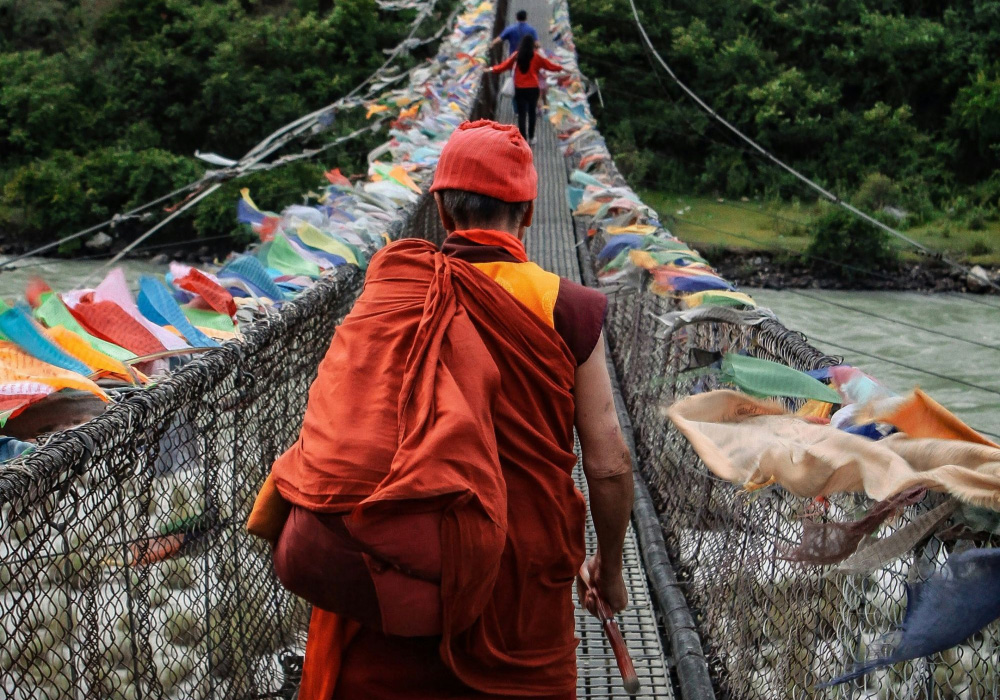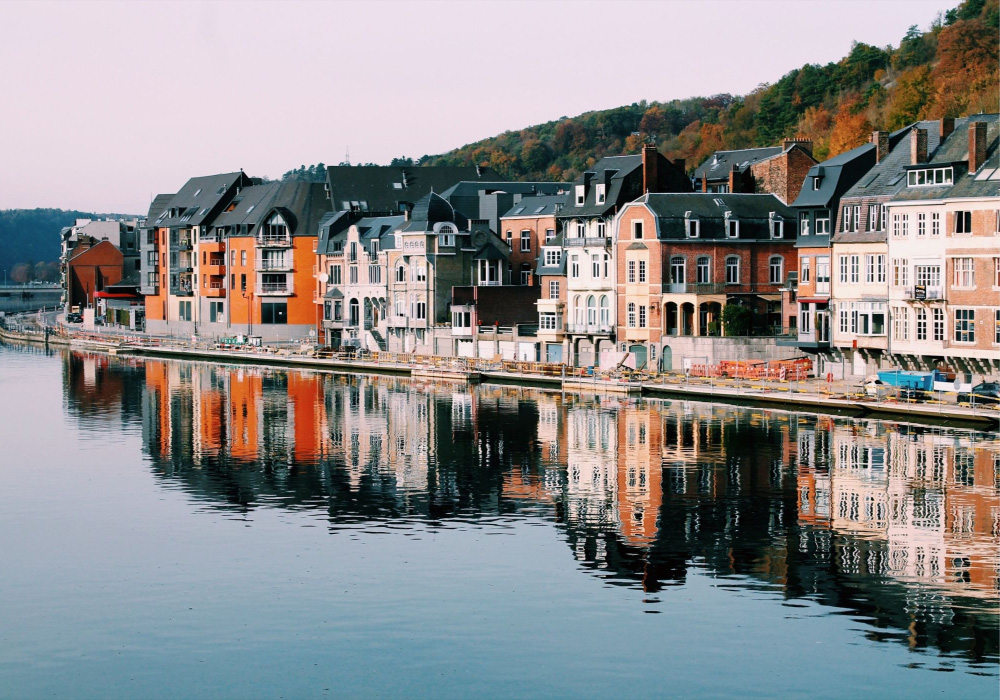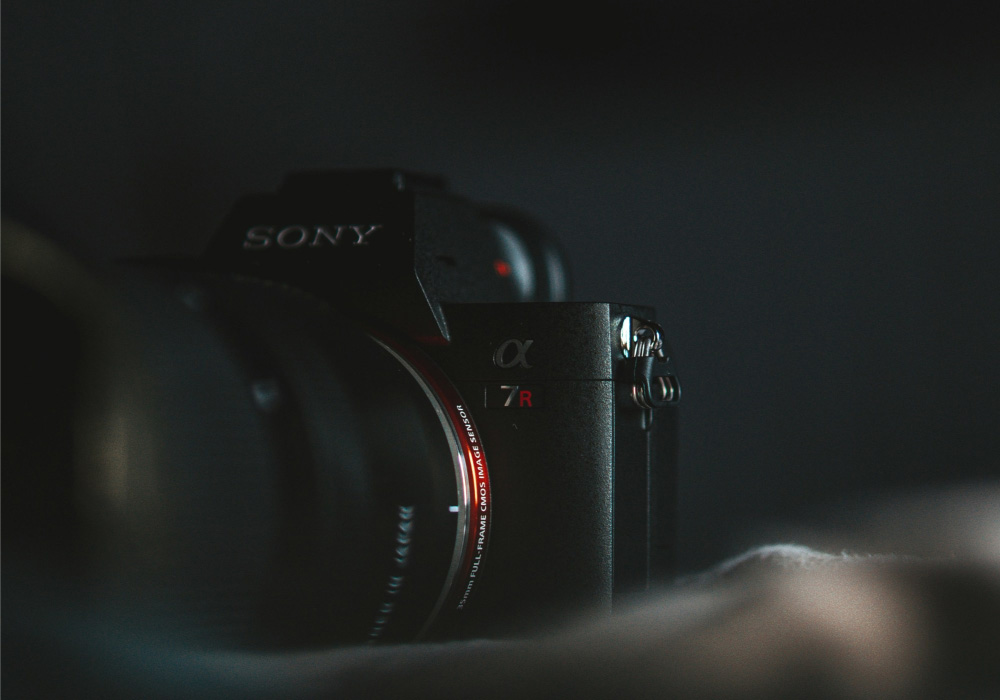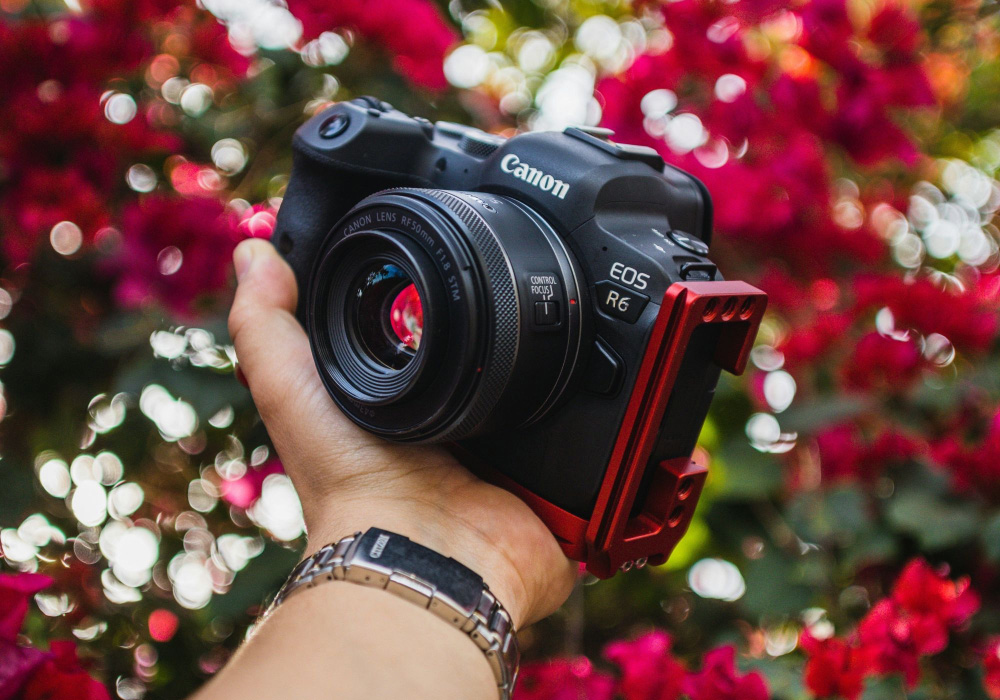Mirrorless cameras are redefining travel photography because they are lightweight, powerful, and perfect for adventure. Discover the best camera and lens combos to elevate your journey, no matter your budget or experience level.
Travel photography combines spontaneity, exploration, and the desire to preserve fleeting moments with clarity and emotion. At the heart of every great travel shot is the right camera gear—equipment that balances image quality, portability, and ease of use. Mirrorless cameras, with their lightweight bodies and professional-grade features, have revolutionized travel photography for both seasoned photographers and enthusiastic beginners. Choosing the right mirrorless system, paired with versatile lenses and key accessories, can dramatically enhance the visual narrative of your adventures.
This comprehensive guide walks you through the best mirrorless cameras and lenses suited for travel, tailored across different price points and photography needs. From sensor performance to user-friendly autofocus systems, from budget-friendly bodies to top-tier pro gear, this article outlines what to look for and how to get the most value out of your travel kit.

Let's dive in!
Top features to look for
When choosing a camera for travel, you're investing in a compact storytelling machine. Travel photography involves shooting in varied light, capturing fast-moving subjects, and navigating unpredictable conditions. So, understanding the key features of a reliable mirrorless camera helps you pick the one that truly fits your needs. Here are some key features to consider:
Sensor size
A camera's sensor size plays a major role in determining image quality, especially in low light. Larger sensors capture more light, resulting in better detail, depth, and dynamic range. There are several sensor sizes available in mirrorless cameras:
- Full-Frame Sensors: These are the largest and offer the best image quality. They are great for low-light and wide-angle shots.
- APS-C Sensors: These are smaller than full-frame but still provide excellent image quality. They are a good balance between performance and portability.
- Micro Four Thirds Sensors: These are even smaller but are perfect for lightweight and compact cameras. They offer decent image quality and are great for travel due to their size.
Bigger sensors mean better image quality, but they also add weight. Choose based on whether you prioritize mobility or maximum photo quality.
Autofocus system
An efficient autofocus (AF) system is essential, particularly when photographing people, wildlife, or dynamic city scenes. Modern mirrorless cameras use hybrid systems that combine speed and accuracy. Here are some things to look for:
- Phase detection autofocus: This system is faster and more accurate, making it ideal for action shots.
- Contrast Detection autofocus: This system is slower but more precise. It is good for still subjects and low-light conditions.
- Hybrid Autofocus: This combines both phase and contrast detection for the best of both worlds.
Some popular AF features include:
| Feature | Description |
|---|---|
| Eye detection | Automatically focuses on the eyes of the subject, perfect for portraits. |
| Animal detection | Great for wildlife photography, focuses on animals' eyes. |
| Tracking autofocus | Maintains focus on moving subjects, ideal for sports and action shots. |
Choose a camera with a reliable autofocus system to ensure your travel photos are sharp and clear.
Weight and portability
Travelling often involves long walks and carrying your gear for extended periods. A lightweight and portable camera can make a big difference:
- Compact design: Smaller cameras are easier to carry and less obtrusive. They fit easily in your bag or even your pocket.
- Lightweight build: A lighter camera reduces strain and makes it easier to handle for long periods.
- Interchangeable lenses: Mirrorless cameras often have interchangeable lenses, allowing you to carry only what you need.

Best budget options
You don't need to spend a fortune to capture stunning travel images. Some affordable mirrorless models offer impressive features that rival higher-end options, making them great picks for beginner or budget-conscious photographers. Here are a few top picks:
Sony ZV-E10 - Designed specifically for content creators, this camera features a 24.2MP APS-C sensor, flip-out touchscreen, and advanced real-time Eye AF. It shoots 4K video without crop and weighs just 343g, making it perfect for vlogging travelers.
Canon EOS R50 - With its 24.2MP APS-C sensor and Dual Pixel CMOS AF II, the R50 offers beginner-friendly operation with professional results. The vari-angle touchscreen and 15fps burst shooting make it versatile for both photos and videos.
Fujifilm X-S20 - This model offers excellent image quality with its 26.1MP APS-C sensor and 7-stop in-body stabilization. It features Fuji's beloved film simulations and improved battery life (750 shots per charge).
OM System OM-5 - Compact and stylish, the OM-5 features a 20MP Micro Four Thirds sensor, 50MP handheld high-res mode, and professional-grade weather sealing in a 414g body.
| Camera Model | Sensor | Special Features |
|---|---|---|
| Sony ZV-E10 | 24.2MP APS-C | Flip screen, Product Showcase Mode |
| Canon EOS R50 | 24.2MP APS-C | Guided UI, 15fps burst |
| Fujifilm X-S20 | 26.1MP APS-C | 7-stop IBIS, Film Simulations |
| OM System OM-5 | 20MP MFT | Weatherproof, Live ND |
Value for money
Budget options don't only mean lower prices; they also mean getting the most out of your investment. The cameras listed below offer exceptional value for money through their blend of features, performance, and build quality:
- Sony ZV-E10 - The dedicated video features like Product Showcase Mode make this ideal for creators who need hybrid capabilities.
- Canon EOS R50 - Offers Canon's latest AF system in an entry-level package, perfect for those upgrading from smartphones.
- Fujifilm X-S20 - The combination of IBIS, film simulations, and 6.2K video offers tremendous value for creative travellers.
- OM System OM-5 - Professional weather sealing in a compact body makes this unique in its price range.
These cameras are not only affordable but also packed with features that make them great for travel photography:
- Sony ZV-E10: Specialized video features with excellent autofocus
- Canon EOS R50: Intuitive interface with powerful AF
- Fujifilm X-S20: Best-in-class stabilization for handheld shooting
- OM System OM-5: Unmatched durability for outdoor adventures
Whether you're exploring bustling cities or serene landscapes, these budget mirrorless cameras deliver quality and reliability, ensuring every shot is a keeper.
Mid-range marvels
If you're ready to invest a bit more for higher-quality features without reaching pro-level prices, mid-range mirrorless cameras are your sweet spot. These models deliver superior performance and greater creative control, all while maintaining a compact footprint.
Performance vs price
Mid-range mirrorless cameras are designed to provide high-quality images and reliable performance at a reasonable cost. Here are some key features to consider:
- Image Quality: Most mid-range cameras now feature BSI sensors that produce crisp, clear images. APS-C and full-frame options are available in this range.
- Portability: These cameras maintain lightweight designs while offering professional features.
- Battery Life: Improved power management offers all-day shooting on single charges.
- Video Capabilities: 4K60p is now standard in this category.
Below is a comparison table of some top mid-range mirrorless cameras:
| Camera Model | Price | Sensor Type | Weight |
|---|---|---|---|
| Sony α6700 | $1,398 | APS-C BSI | 493g |
| Fujifilm X-T5 | $1,699 | APS-C | 557g |
| Nikon Z fc | $959 | APS-C | 445g |
User reviews
Real-world user reviews provide valuable insights into a camera's performance. Travelers often share their experiences, highlighting the pros and cons of their gear.
Here are some summarized reviews from users:
- Sony α6700: Users praise its AI autofocus and video capabilities, though some note the menu system remains complex.
- Fujifilm X-T5: This camera is loved for its film simulations and high-resolution sensor, with some users wishing for better battery life.
- Nikon Z fc: The retro design receives universal praise, while some wish for in-body stabilization.
Here's a more detailed look at user ratings:
| Camera Model | Avg Rating | Pros | Cons |
|---|---|---|---|
| Sony α6700 | 4.7/5 | AF performance, Video quality | Menu complexity |
| Fujifilm X-T5 | 4.8/5 | Image quality, Build | Battery life |
| Nikon Z fc | 4.5/5 | Design, Colors | No IBIS |
High-end choices
For professionals and serious enthusiasts, high-end mirrorless cameras offer unparalleled quality and creative flexibility. These models feature industry-leading specs that allow you to push your travel photography to its full potential.
Professional features
High-end mirrorless cameras come packed with professional features that enhance your photography experience. These features are designed to meet the needs of seasoned photographers:
- Fast autofocus: Advanced AI subject tracking ensures you never miss a shot
- Weather sealing: Professional-grade protection against elements
- In-body stabilization: Up to 8 stops of compensation for handheld shots
- High-speed capture: 20fps+ continuous shooting with full AF
Below is a table summarizing some professional features of top high-end mirrorless cameras:
| Camera Model | AF Points | Continuous Shooting | Weather Sealing |
|---|---|---|---|
| Sony α7R V | 693 | 10fps | Yes |
| Canon R6 II | 1053 | 40fps | Yes |
| Nikon Z8 | 493 | 20fps | Yes |
Image quality
High-end mirrorless cameras offer superior sensors and advanced technology to deliver stunning images:
- Resolution: Up to 61MP for incredible detail
- Dynamic range: 15+ stops for perfect exposure in challenging light
- Low light performance: Clean results at ISO 6400+
- Colour science: Accurate skin tones and natural rendering

Consider the following comparison of image quality features:
| Camera Model | Resolution | Dynamic Range | ISO Range |
|---|---|---|---|
| Sony α7R V | 61MP | 15 stops | 100-32000 |
| Canon R6 II | 24MP | 14 stops | 100-102400 |
| Nikon Z8 | 45.7MP | 14 stops | 64-25600 |
Lenses for travel photography
A great camera is only as versatile as the lens it’s paired with. For travel, your lenses should be lightweight yet adaptable to a variety of scenes—from vast landscapes to tight city streets. Here's a breakdown of the best types of lenses to consider.
Wide-angle lenses
Wide-angle lenses are essential for capturing expansive landscapes, cityscapes, and group shots. They offer a broad field of view, allowing you to include more of the scene in your frame. This makes them perfect for travel photography, where space and environment play crucial roles.
Key benefits:
- Broader perspective: Capture more of the scene
- Depth of field: Greater sense of spatial depth
- Versatility: Ideal for architecture, interiors, and environmental portraits
Top wide-angle lenses:
| Lens Model | Focal Length | Aperture | Key Feature |
|---|---|---|---|
| Sony FE 16-35mm f/4 G PZ | 16-35mm | f/4 | Power zoom for video, 30% lighter than GM |
| Canon RF 14-35mm f/4L IS | 14-35mm | f/4 | 5.5-stop IS, nano USM focus |
| Fujifilm XF 8-16mm f/2.8 R LM WR | 8-16mm | f/2.8 | Ultra-wide zoom, weather resistant |
| OM System M.Zuiko 8-25mm f/4 PRO | 8-25mm | f/4 | Dual-range ultra-wide to standard |
These lenses provide excellent quality while being more compact than previous generations. The Fujifilm 8-16mm offers the widest APS-C coverage, while the OM System 8-25mm provides unmatched versatility in a Micro Four Thirds package.
Zoom lenses
Zoom lenses offer flexibility and convenience, making them ideal for travel photography. Modern versions maintain excellent sharpness throughout their ranges while being more compact than ever.
Key advantages:
- Versatility: Cover multiple focal lengths in one lens
- Convenience: Eliminate frequent lens changes
- Space-Saving: Reduce baggage weight and volume
Best travel zoom lenses:
| Lens Model | Focal Length | Aperture | System | Weight |
|---|---|---|---|---|
| Tamron 28-200mm f/2.8-5.6 Di III RXD | 28-200mm | f/2.8-5.6 | Sony E | 575g |
| Canon RF 24-240mm f/4-6.3 IS USM | 24-240mm | f/4-6.3 | Canon RF | 750g |
| Fujifilm XF 18-120mm f/4 LM PZ WR | 18-120mm | f/4 | Fuji X | 460g |
| Panasonic 20-60mm f/3.5-5.6 | 20-60mm | f/3.5-5.6 | L-Mount | 350g |
Standout features:
- Tamron 28-200mm: Maintains f/2.8 at wide end for low-light capability
- Fujifilm 18-120mm: Power zoom ideal for video with constant f/4 aperture
- Panasonic 20-60mm: Unique 20mm wide end perfect for tight spaces
Prime lenses for specialized needs
For travellers prioritizing image quality and compactness:
| Lens | Focal Length | Aperture | Best For |
|---|---|---|---|
| Sony FE 24mm f/2.8 G | 24mm | f/2.8 | Street photography |
| Canon RF 35mm f/1.8 IS Macro | 35mm | f/1.8 | Food/Detail shots |
| Fujifilm XF 23mm f/1.4 R LM WR | 23mm | f/1.4 | Low-light environments |
| OM System 20mm f/1.4 PRO | 20mm | f/1.4 | Astrophotography |
Comparison: Zoom vs Prime for travel
| Feature | Zoom Lenses | Prime Lenses |
|---|---|---|
| Versatility | ★★★★★ | ★★★☆☆ |
| Image Quality | ★★★★☆ | ★★★★★ |
| Low-Light Performance | ★★★☆☆ | ★★★★★ |
| Portability | Varies (new models very compact) | ★★★★★ |
Pro tip: The Tamron 28-200mm paired with a fast prime (like a 35mm f/1.8) makes an ideal two-lens travel kit covering 90% of situations.
Must-have accessories for travel photography
Great travel photography depends on more than just a capable camera and lens. The right accessories can significantly improve your shooting experience, help you adapt to different environments, and protect your gear on the go. From sturdy tripods to intelligently designed camera bags, these updated essentials are built with travellers in mind.
Tripods
A reliable tripod is one of the most important tools for travel photography, especially when shooting in low light or experimenting with long exposures and time-lapses. A good travel tripod should be portable, easy to set up, and sturdy enough to support your camera setup in any condition.
Key features to look for include:
- Lightweight design for hassle-free packing and carrying.
- Compact folded size so it fits into backpacks or luggage.
- Durable build to support mirrorless cameras with larger lenses.
Top travel tripods:
| Model | Weight | Folded Length | Max Load |
|---|---|---|---|
| Manfrotto Befree Advanced Twist | 1.49 kg | 40 cm | 8 kg |
| Peak Design Carbon Fiber Travel Tripod (2nd Gen) | 1.27 kg | 39.1 cm | 9.1 kg |
| Ulanzi Zero Y Carbon Travel Tripod | 1.1 kg | 42 cm | 8 kg |
| Joby GorillaPod 5K Kit | 0.4 kg | 38.5 cm | 5 kg |
These travel tripods combine portability and durability with updated materials like carbon fibre and stronger locking systems, making them suitable even for full-frame mirrorless setups.
Camera bags
A good camera bag is more than just storage—it’s your mobile base. It should keep your gear safe, organized, and accessible while complementing your style of travel. Whether you’re navigating busy cities or hiking remote trails, your bag needs to perform under pressure.
Look for features such as:
- Padded interiors to protect delicate gear.
- Modular compartments for flexible organization.
- Weather-resistant materials for unpredictable conditions.
Top camera bags for travel:
| Model | Type | Weight | Features |
|---|---|---|---|
| Peak Design Everyday Backpack v2 (20L/30L) | Backpack | 1.44–1.77 kg | Sleek design, customizable FlexFold dividers |
| WANDRD PRVKE 21L v3 | Backpack | 1.3 kg | Expandable, weatherproof, removable camera cube |
| Lowepro ProTactic BP 350 AW III | Backpack | 2.2 kg | Rugged build, all-weather cover, side access |
| Moment MTW Camera Tote | Tote | 0.9 kg | Stylish, padded, easy-access top-loading design |
Today’s best camera bags blend style and utility with smart design choices that cater to photographers constantly on the move. Whether you need something minimalist or something rugged, these picks ensure your gear stays safe, dry, and ready.
Parting thoughts
Choosing the best mirrorless camera for travel depends on your specific needs—whether you're documenting weekend getaways or embarking on months-long adventures. From budget-conscious options to high-end performers, there’s a camera out there that will meet your goals and enhance your experience.
Don’t overlook the importance of lenses and accessories. A well-selected zoom or prime lens can elevate your photos, while thoughtful add-ons like a travel tripod or sturdy bag make your gear safer and more functional. In the end, it’s about striking the right balance between portability, quality, and usability. With the right setup in hand, your travel memories won’t just be preserved—they’ll come to life.
Happy travels and happy shooting!




Comments powered by CComment